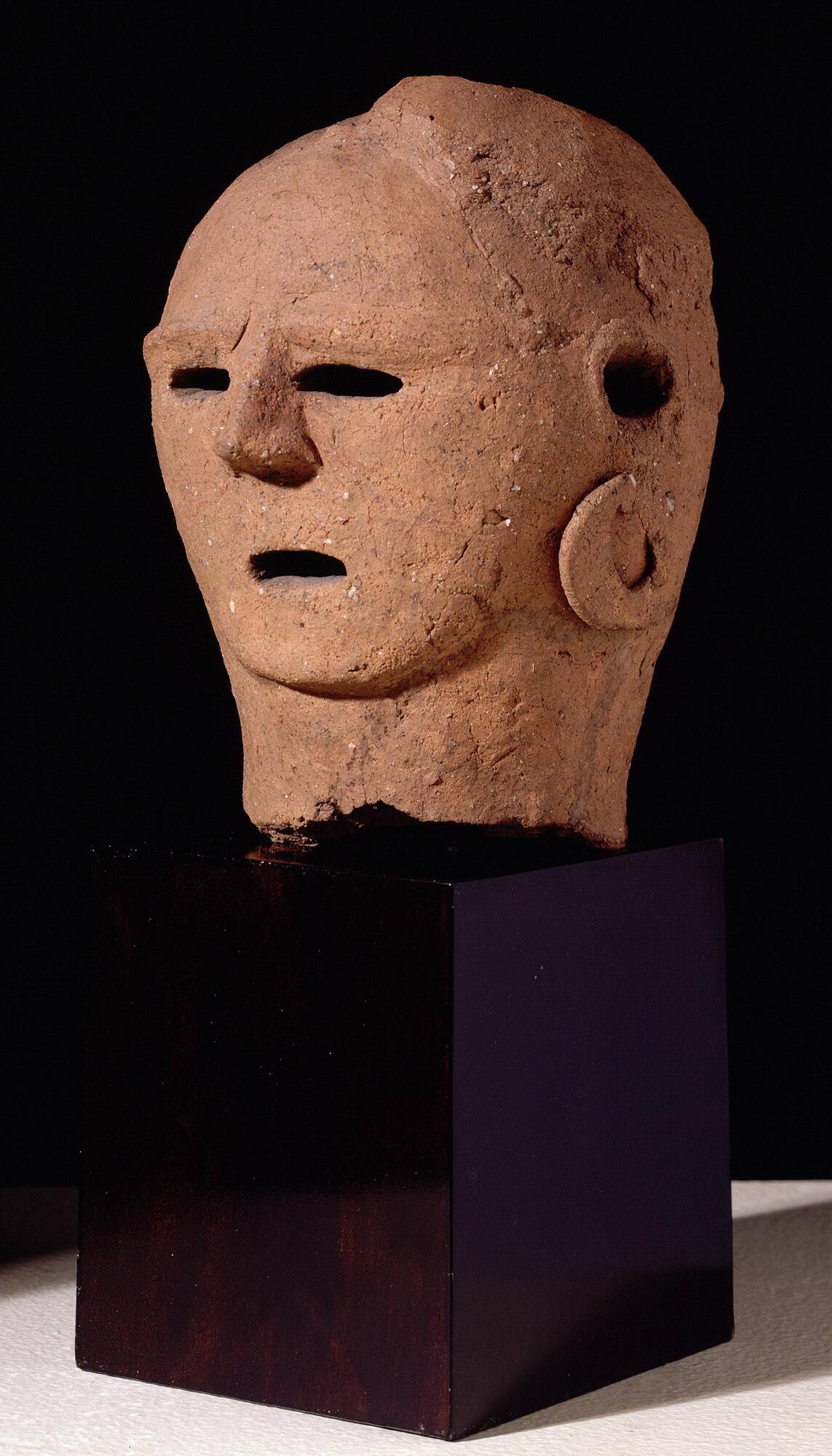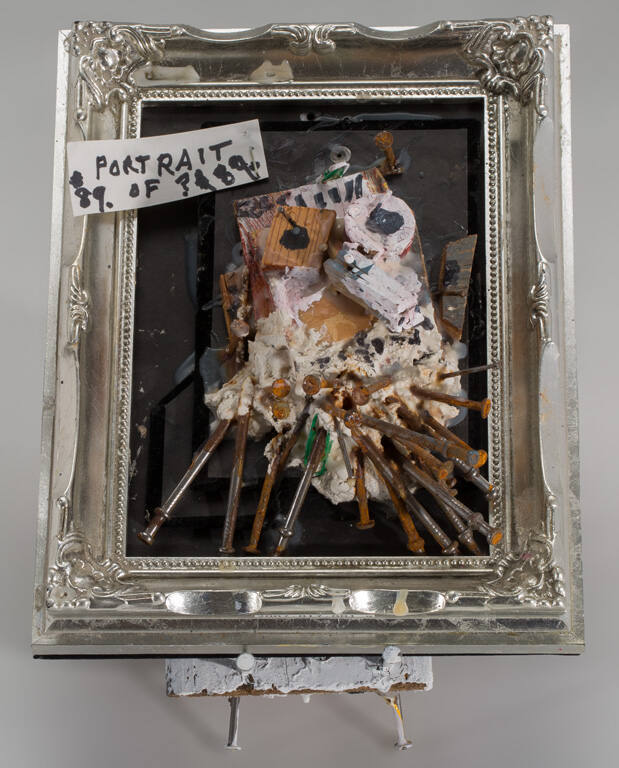
Object Details
Culture
Japan
Kofun period
Date
6th century
Medium
Terra-cotta
Dimensions
6 x 6 1/4 inches (15.2 x 15.9 cm)
Credit Line
George and Mary Rockwell Collection
Object
Number
63.263
Kofun were large, mounded tombs that, seen from above, appear in the form of a circle joined to a re(…)
Kofun were large, mounded tombs that, seen from above, appear in the form of a circle joined to a rectangle, suggesting the shape of the modern keyhole. On and around the tomb mound, hundreds of clay cylinders topped with sculpted images were inserted. The function of these clay cylinders, or haniwa, is still debated, but generally it is believed they were attempts to console the dead by providing a reassuring environment for their spirits, who continued to dwell in the sacred precincts of the tomb. Hence haniwa drew their subject matter from the familiar world of the living: animals, houses, weapons, ritual objects, and human figures. Although this piece is missing the rest of the body and the cylinder base, it is nonetheless a vivid image of a haniwa head. With great boldness and simplicity, the sculptor has conveyed the sense of a human caught in a moment of great seriousness. Despite the roughness of the clay and the quickness of handling, the image seems remarkably sophisticated and appealing. (From “A Handbook of the Collection: Herbert F. Johnson Museum of Art,” 1998)












